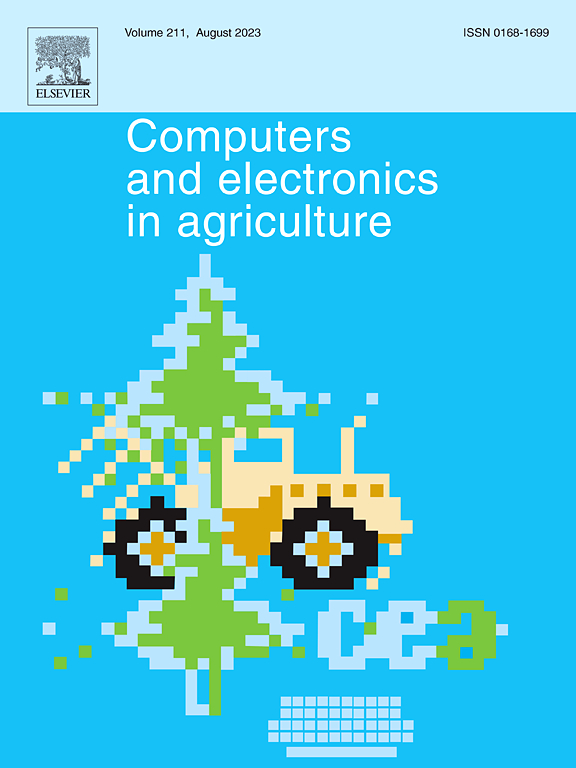基于深度少镜头学习的杂草图像识别研究进展
IF 8.9
1区 农林科学
Q1 AGRICULTURE, MULTIDISCIPLINARY
引用次数: 0
摘要
杂草危害农作物生长和产量,是农业生产的主要障碍。近年来,深度学习虽然在杂草图像识别方面取得了很大的突破,但在处理复杂的农田环境、杂草形态多样性、样本有限等问题上仍然存在明显的局限性,如数据稀缺、标记数据少、杂草类别多等。重要的原因是,深度学习模型需要依靠庞大的数据集进行训练,这使得杂草数据收集的工作非常庞大。杂草图像的少拍学习可以利用深度学习模型从少拍和不同类别的杂草中学习有效的模式,从而解决深度模型在样本有限的情况下在杂草图像识别中表现不佳的问题。本文从智能农业机械杂草识别的角度,跟踪了近年来少射学习的研究进展,探讨了利用深度学习技术实现少射下高效、准确的杂草识别的方法和策略。重点研究了数据集中的小样本学习模型、特征提取和图像分类的相应策略,包括数据增强、元学习、主动学习、度量学习和迁移学习。最后,本文分析了近年来基于深度少镜头学习的杂草识别在真实农田场景中的应用案例,探讨了少镜头学习方法在车载和机载平台应用中的性能、优缺点。通过对比分析,本文发现Siamese网络仅能利用10%的数据学习特征。数据增强和主动学习有效地解决了班级失衡问题,但元学习在预测未见班级方面表现出色。微调被广泛使用,在5个镜头的场景中表现最好。本研究不仅填补了杂草识别中少镜头学习的研究空白,而且在有限数据的基础上提供了新的思路和方法。展望未来,希望能够为基于小样本数据的杂草识别研究提供有益的参考。本文章由计算机程序翻译,如有差异,请以英文原文为准。
A review of weed image identification based on deep few-shot learning
Weeds plague the growth and yield of crops, which is a major obstacle to agricultural production. In recent years, deep learning although has made great breakthroughs on weed image identification, it still faces notable limitations in dealing with complex farmland environments, morphological diversity of weeds, and limited samples, such as data scarcity, few labeled data, and many weed categories. The important reason is that deep learning models need to rely on huge datasets for training, which makes the work of weed data collection huge. Few-shot learning of weed images can use deep learning model to learn effective patterns from few-shot and different classes of weeds, so as to solve the problem of poor performance of depth model in weed image identification under the condition of limited samples. From the perspective of weed identification by intelligent agricultural machinery, this paper tracks the research progress of few-shot learning in recent years and discusses the methods and strategies of using deep learning technology to achieve efficient and accurate weed identification under few-shot. It focuses on the corresponding strategies of few-shot learning models in datasets, feature extraction, and image classification, including data augmentation, meta-learning, active learning, metric learning, and transfer learning. Finally, this paper analyzed the application cases of weed recognition based on deep few-shot learning in real farmland scenarios in recent years and explored the performance, advantages, and disadvantages of few-shot learning methods in the application of vehicle and airborne platforms. This paper finds that the Siamese network can learn features using only 10% of the data through comparative analysis. Data augmentation and active learning effectively address class imbalance, but meta learning excels in predicting unseen classes. Fine-tuning is widely used and performs best in 5-shot scenarios. This research not only fills the research gap of few-shot learning of weed recognition but also provides new ideas and methods based on limited data. Looking forward to the future, we hope to provide useful reference for the research of weed identification driven by few-shot data.
求助全文
通过发布文献求助,成功后即可免费获取论文全文。
去求助
来源期刊

Computers and Electronics in Agriculture
工程技术-计算机:跨学科应用
CiteScore
15.30
自引率
14.50%
发文量
800
审稿时长
62 days
期刊介绍:
Computers and Electronics in Agriculture provides international coverage of advancements in computer hardware, software, electronic instrumentation, and control systems applied to agricultural challenges. Encompassing agronomy, horticulture, forestry, aquaculture, and animal farming, the journal publishes original papers, reviews, and applications notes. It explores the use of computers and electronics in plant or animal agricultural production, covering topics like agricultural soils, water, pests, controlled environments, and waste. The scope extends to on-farm post-harvest operations and relevant technologies, including artificial intelligence, sensors, machine vision, robotics, networking, and simulation modeling. Its companion journal, Smart Agricultural Technology, continues the focus on smart applications in production agriculture.
 求助内容:
求助内容: 应助结果提醒方式:
应助结果提醒方式:


